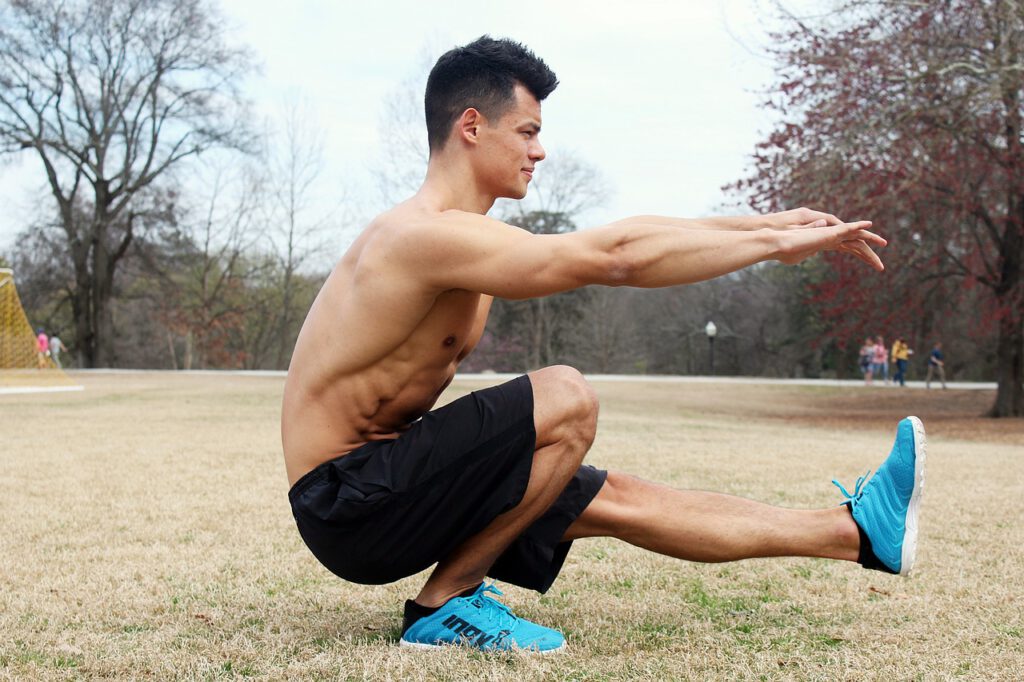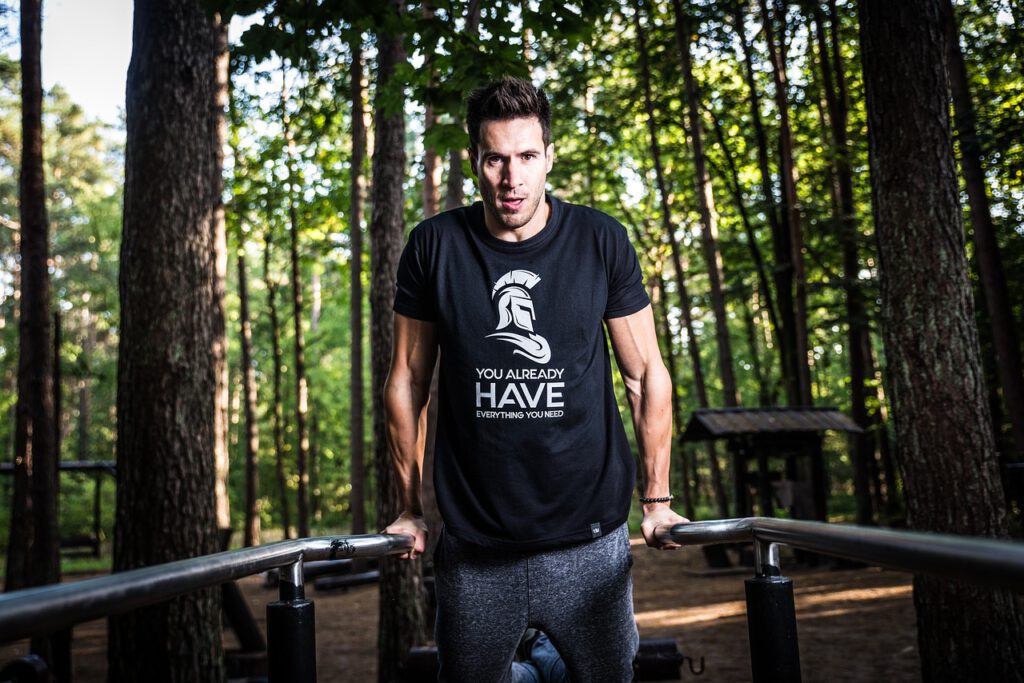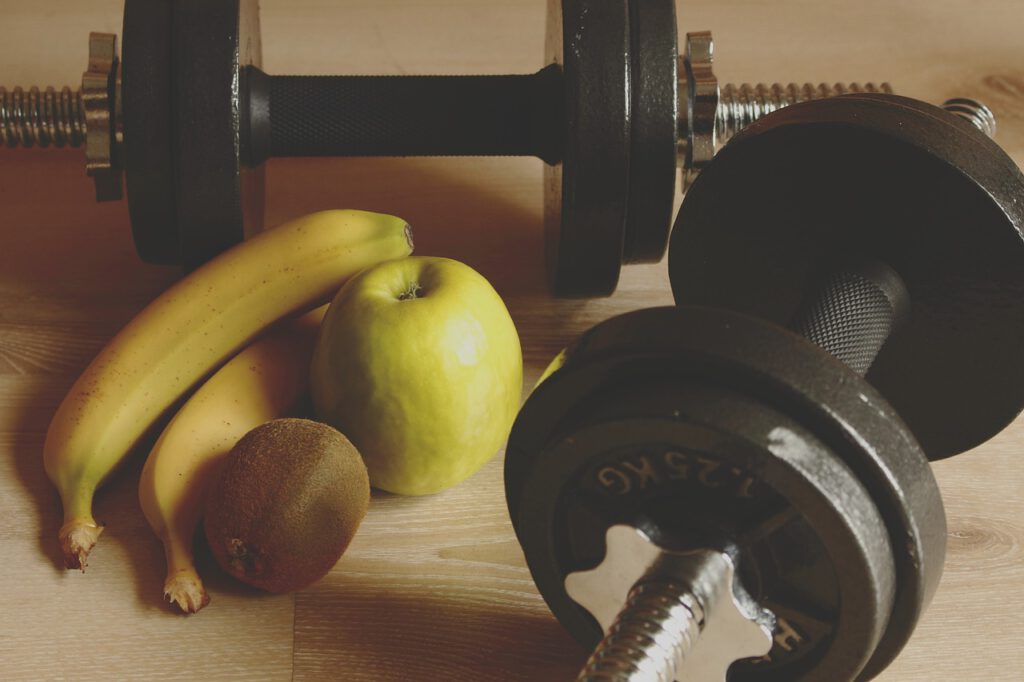
Puberty is a confusing and difficult time for many young people, but it can be even harder if you suffer from gynecomastia. This condition, which involves the enlargement of breast tissue in males, can cause physical and emotional pain. Many boys don’t know how to address this issue or where to turn for help. Fortunately, there are ways to treat gynecomastia during puberty that can reduce symptoms and improve self-confidence.
This article will provide an overview of what gynecomastia is and why it occurs during puberty. We will also discuss the various treatments available for managing the condition, such as medications, lifestyle changes, and alternative therapies. Finally, we will explore how to get rid of gynecomastia during puberty in a safe and effective way. With the right information and support from family and healthcare professionals, it is possible to reduce your symptoms and improve your quality of life during this period of growth and change.
1. Understanding Gynecomastia During Puberty
It’s a common belief that gynecomastia during puberty is caused by hormonal changes. But does this theory hold true? To answer this question, we need to understand the development of gynecomastia during puberty.
Gynecomastia is an enlargement of the male breast tissues due to an imbalance in hormones. This can occur at any age, but it’s more common during puberty when hormone levels are constantly changing. During this stage of life, boys experience a surge in estrogen production while testosterone levels remain low. This imbalance can lead to the growth of breast tissue and cause males to develop what’s known as ‘man boobs’ or gynecomastia.
So how do you get rid of gynecomastia during puberty? The best way is to maintain a healthy lifestyle and make sure you’re getting enough exercise and eating a balanced diet. There are also some medications that can help reduce the symptoms of gynecomastia, but these should only be taken under the supervision of your doctor.
The causes of gynecomastia during puberty vary from person to person, but understanding the condition is key to finding an effective treatment plan. With proper guidance and care, it’s possible for boys with gynecomastia during puberty to find relief from their symptoms and live happier lives.
2. Causes Of Gynecomastia During Puberty
Gynecomastia during puberty: It’s a nightmare for most teenage boys! No one wants to walk around with man-boobs, yet it’s such an embarrassment that often goes untreated. But what causes gynecomastia during puberty?
Well, the truth is that there are numerous causes of gynecomastia during puberty, and understanding them can be the first step towards getting rid of this condition. Here are some of the most common culprits:
- Hormonal Imbalance: During puberty, hormones can become imbalanced and cause gynecomastia. This could be due to changes in estrogen or testosterone production.
- Medications: Certain medications such as antibiotics or steroids can cause hormone levels to change and lead to gynecomastia.
- Obesity: Being overweight or obese puts men at a higher risk for developing gynecomastia as fat deposits in the chest area may contribute to its development.
- Genetics: Genetics can also play a role in the development of gynecomastia during puberty, as certain genetic predispositions may increase the chances of having it.
It is clear then that there are many potential underlying causes for gynecomastia during puberty, but understanding these factors is key if you want to get rid of it. Knowing what’s causing your man-boobs can help you decide on a course of action and work towards finding an effective treatment plan. And with that knowledge, you’ll be well on your way towards achieving manhood without any unwanted lumps!
3. Treatments For Gynecomastia During Puberty
As the adolescent years approach, one of the most dreaded issues for young men is gynecomastia – an over-development of breast tissue in boys during puberty. It’s a condition that can cause much embarrassment and discomfort. But there are treatments available to help reduce the symptoms.
The first and most important step is to identify the underlying cause. In some cases, hormones may be responsible; in others, it may be due to certain medications or other medical conditions. Once the cause has been identified, it’s possible to begin treatment.
There are a variety of options available, such as dietary changes and lifestyle modifications that can help reduce symptoms. Exercise can also be beneficial in reducing excess fat in areas prone to gynecomastia development. Certain supplements and natural remedies may also provide relief from the condition, although they should always be used with caution and under the guidance of a healthcare professional.
These treatments offer real hope for those suffering from gynecomastia during puberty – providing them with the opportunity to manage their condition and get on with their lives without feeling embarrassed or ashamed about their appearance. And when professional medical intervention is required, there are powerful benefits that come with seeking expert help.
4. Benefits Of Professional Medical Treatment
Professional medical treatment for gynecomastia during puberty is a reliable and effective way to reduce the symptoms of this condition. It’s important to discuss all available treatments with a doctor, as they can provide advice on which treatment might work best according to the individual’s needs. Generally, professional medical treatments involve the use of medications, surgery or hormone therapy.
Medication is often used to treat gynecomastia in puberty because it can be used to target specific hormones that may be causing the condition. Additionally, medication can help reduce any other associated symptoms such as pain and discomfort. Surgery is another option for those who are looking for a more permanent solution. Depending on the severity of the condition, surgery may involve removing excess tissue from the chest area or using liposuction techniques to remove fat deposits. Hormone therapy can also be helpful when treating gynecomastia during puberty as it works by reducing levels of hormones that cause enlargement of breast tissue.
All three of these treatments have their own advantages and disadvantages; however, professional medical treatments are typically recommended first as they are more likely to produce positive results quickly and safely. It’s important to note that while professional medical treatments do offer many benefits, they should always be discussed with a doctor before beginning any kind of treatment plan. From there, a patient can decide if natural treatments may also be beneficial in treating their condition.
5. Advantages Of Natural Treatments
As the saying goes, “Natural is best” – and when it comes to gynecomastia during puberty, this rings especially true. Fortunately, there are a variety of natural treatments which can help to reduce the effects of gynecomastia. From herbal remedies to lifestyle changes, these treatments offer a range of advantages.
One of the main benefits of natural treatments for gynecomastia is that they provide an affordable and accessible option for many people. Herbal remedies are widely available and relatively inexpensive compared to professional medical treatment. They also tend to have fewer side effects than pharmaceutical drugs, making them safer for long-term use.
Another advantage of natural treatments is that they often involve lifestyle changes which can have additional health benefits in addition to reducing gynecomastia symptoms. For instance, eating a balanced diet and exercising regularly can improve overall physical health as well as helping to address hormonal imbalances which may be contributing to the condition.
By taking a holistic approach and making positive lifestyle changes, it is possible to naturally reduce the effects of gynecomastia during puberty without relying on expensive or potentially dangerous medications. With this in mind, shifting focus now onto dietary and exercise strategies may be beneficial for those looking for an effective way to manage their condition naturally.
6. Diet And Exercise Strategies To Reduce Gynecomastia
Exercising and eating a healthy diet are two of the most effective strategies for reducing gynecomastia during puberty. Working out can help to strengthen and build chest muscles, while proper nutrition can help in achieving optimal hormone balance and reduce fat accumulation in the chest area.
When hitting the gym, it’s important to focus on exercises that target the chest muscles like push-ups, bench presses, pull-ups, and cable crossovers. It’s also beneficial to combine these with HIIT (high intensity interval training) exercises in order to maximize fat loss. To ensure that you get enough protein for muscle growth, make sure to include lean meats, eggs, dairy products and legumes in your meals.
In addition to exercise and diet, it’s important to pay attention to lifestyle habits like getting enough sleep and reducing stress as well. Getting at least 8 hours of sleep every night helps regulate hormones like testosterone which can help reduce gynecomastia symptoms. Reducing stress is also beneficial since stress hormones can interfere with testosterone production. By combining all these strategies together, men can greatly reduce their gynecomastia symptoms during puberty.
Next up we’ll explore herbal remedies for gynecomastia which may provide additional support in managing this condition.
7. Herbal Remedies For Gynecomastia
You may already be aware that diet and exercise are important strategies to reduce gynecomastia during puberty. But did you know there are herbal remedies that can help too? Believe it or not, these natural treatments might just be the answer you’ve been looking for!
The first thing to note is that many herbs contain phytoestrogens. These compounds have a similar effect as the estrogen found in our bodies, except they are much weaker. This means they can reduce breast swelling without having any adverse effects on your hormones – perfect for teenagers trying to get rid of gynecomastia during puberty. Examples of herbs with high levels of phytoestrogens include red clover, fennel, chasteberry and saw palmetto.
Another point worth considering is that certain herbs have anti-inflammatory properties which could help reduce inflammation around the chest area. For example, turmeric and ginger both contain powerful antioxidants which could help fight off free radicals associated with inflammation. Taking these herbs regularly could provide some relief from gynecomastia symptoms such as tenderness or soreness in the chest area.
Herbal remedies may be able to provide some relief from gynecomastia during puberty but it’s important to remember that they should be used alongside recommended treatments like diet and exercise for best results. In the next section we’ll look at how surgery can play a role in treating gynecomastia in teenagers.
8. Role Of Surgery In Treating Gynecomastia
Surgery is a viable option for those struggling with gynecomastia during puberty. It can provide a long-term solution, but it comes with risks and complications that must be considered carefully.
The first step in understanding if surgery is right for you is to consult with a doctor experienced in treating gynecomastia. They will be able to provide information on the types of surgeries available, their potential outcomes, and the associated risks. Here are some key points to look out for:
- The type of surgery performed will depend on the size and composition of the breast tissue.
- Scarring may occur depending on the surgical procedure used.
- Surgery could require multiple procedures over time to achieve desired results.
Before committing to any form of surgery, it’s important to discuss your options in detail with your doctor and weigh up the pros and cons against other treatments available. The decision should not be taken lightly as complications can arise from surgery for gynecomastia, such as infection or changes in nipple sensitivity. With that said, surgery can help reduce or remove unwanted breast tissue in males who are experiencing gynecomastia during puberty and beyond. Moving forward, we’ll explore some of the potential complications of surgery for gynecomastia.
9. Complications Of Surgery For Gynecomastia
It is commonly thought that surgery is a surefire way to get rid of gynecomastia during puberty. While it’s true that surgery can be effective, there are potential risks and complications involved. This article will explore the possible complications of surgery for gynecomastia treatment.
The most common complication associated with gynecomastia surgery is excessive bleeding or hematoma formation. This occurs when either too much tissue is removed or the incision is made too deep. Hematomas can lead to infection, bruising, and scarring, all of which can be painful and difficult to treat. Additionally, if the surgeon does not remove enough tissue, the patient may still have visible signs of gynecomastia remaining after the procedure.
Other potential complications include nerve damage or numbness at the site of the incision, allergic reactions to anesthesia or other medications given during the procedure, and chest contour irregularities due to uneven fat removal. Some patients also experience fluid buildup in the chest area after surgery called seroma formation; this requires additional surgical intervention to drain it out. Lastly, some people may develop keloid scars around the incision due to increased production of collagen in their skin cells.
No matter what type of surgical procedure is performed for gynecomastia treatment, it’s important for patients to follow up with their doctor afterwards for regular checkups and monitoring of any side-effects or complications that may arise from the surgery itself. Having a skilled physician nearby who knows how to spot any potential issues before they become serious can help ensure a successful recovery process with minimal risks involved.
10. Follow-Up Care For Gynecomastia Treatment
For many teens, gynecomastia is a condition that can be embarrassing and uncomfortable. Take the case of Matthew, who was 13 when he first noticed his breast tissue growing. He was concerned about his appearance, but also worried about how to treat it. With proper follow-up care for gynecomastia treatment, Matthew was able to reduce the size of his breasts and minimize any discomfort.
Follow-up care for gynecomastia treatment is an important part in ensuring successful results. Here are three steps to keep in mind:
1) Monitor your results – Regularly check with your doctor to see if the treatment is working as expected.
2) Avoid activities that may cause further inflammation or discomfort – This can include heavy lifting, vigorous exercise, or wearing tight clothing.
3) Take medication as prescribed – Make sure to take any medications that were prescribed by your doctor and follow up with them if you experience any serious side effects.
These steps should help keep you on track with your recovery from gynecomastia and ensure a successful outcome. However, it’s important to remember that everyone’s experience is different and progress may vary for each individual. It’s best to talk with your doctor about what kind of follow-up care would work best for you and your particular situation.
Frequently Asked Questions
Is Gynecomastia Treatable During Puberty?
Gynecomastia is a common issue amongst adolescent males in puberty. It can be embarrassing, uncomfortable and even painful for boys going through this stage of development. But the good news is that it’s possible to treat gynecomastia during puberty with medical care and lifestyle changes.
It’s important to understand that gynecomastia isn’t something to be ashamed of – it doesn’t mean there’s anything ‘wrong’ with you; rather, it’s just part of the normal developmental process. That said, if you’re struggling with gynecomastia, don’t hesitate to talk to your doctor about treatments or lifestyle changes that could help alleviate your symptoms.
To start off, your doctor may recommend one or more medications depending on the severity of your condition. Additionally, they may suggest diet and exercise modifications as well as hormone therapy to reduce the swelling associated with gynecomastia. An anachronism here: take a step back in time and look at how ancient cultures handled gynecomastia – many used natural remedies like herbs and oils to reduce symptoms! With the right combination of treatments, you can have relief from your condition in no time.
So if you’re dealing with gynecomastia during puberty, know that there are options available for you – don’t let it stop you from living a happy and healthy life!
How Long Will It Take To Get Rid Of Gynecomastia?
Gynecomastia can be a difficult condition to deal with during puberty. It can cause physical discomfort as well as embarrassment among peers. Fortunately, it is possible to get rid of gynecomastia and the amount of time it takes will depend on several factors. Here’s what you need to know:
First, the type of gynecomastia will play an important role in how long it will take for treatment to be effective. For example, if the gynecomastia is caused by hormone imbalances, then medications may be prescribed which could provide relief within a few weeks or months. On the other hand, if the condition is due to excess fat or glandular tissue, then surgery may be necessary, which could require several months for full recovery.
Secondly, lifestyle changes can also contribute to reducing symptoms of gynecomastia. Eating a healthy diet and regular exercise can help reduce body fat and improve overall health and fitness levels. Additionally, quitting smoking or drinking alcohol can also make a difference over time in terms of improving breast appearance.
Finally, there are other treatments available that may help reduce symptoms associated with gynecomastia such as topical creams or herbal supplements. These should only be used under the supervision of a physician since some products may not be safe for teenagers still going through puberty. Here’s a list of things you can do to reduce your symptoms: • Follow a healthy diet • Engage in regular physical activity • Quit smoking/drinking alcohol • Try topical creams/herbal supplements (under medical supervision) • Consider surgery (if appropriate) By making lifestyle changes and exploring various treatment options with your doctor, you should be able to get rid of your gynecomastia symptoms and feel more confident about your body during puberty.
Are There Any Side Effects Associated With Natural Treatments?
Patience is a virtue, and for those who suffer from gynecomastia during puberty, that couldn’t be more true. But for them, the wait for relief can feel like an eternity. Fortunately, there are natural treatments that can help reduce the size of enlarged male breasts without any major side effects.
The good news is that these treatments can be successful in reducing the size of enlarged breasts in as little as a few weeks. But with all natural treatments, there are some potential risks associated with them. It’s important to speak with your doctor to discuss any concerns you may have before beginning any type of treatment.
It’s also important to remember that while many natural treatments can help reduce the size of enlarged breasts, they may not completely get rid of it. As such, it’s important to explore other options if you’re looking for lasting results. TIP: Make sure you consult your doctor before starting any treatment plan and take into account your own needs and goals when selecting a treatment option. Natural remedies may not provide complete relief or long-term results, so be sure to consider all available options before making a decision.
What Is The Cost Of Medical Treatments For Gynecomastia?
Figuratively speaking, gynecomastia can be a burden on the wallets of those affected. Treating the condition medically can be pricey, leaving many wondering what their options are. Fortunately, there are a range of treatments available that vary in cost.
For mild cases, medication is sometimes prescribed to help reduce the size of enlarged breasts. Oftentimes this medication will cost anywhere from $50-$100 per month and may require several months of use before it is successful. Additionally, surgical procedures exist to treat gynecomastia such as liposuction or excision techniques which can cost anywhere from $3,000-5,000 depending on the severity of the case.
Though medical treatments may come with a hefty price tag, they may provide long-term relief for those suffering from gynecomastia during puberty. However, it’s important to talk to your doctor about all available treatment options and discuss which one is best for you and your budget.
Are There Any Age Restrictions For Gynecomastia Surgery?
Pondering the potential for a puberty-time procedure to treat gynecomastia? It’s important to know about age restrictions before moving forward. Are there limits or rules around when you can seek plastic surgery to get rid of gynecomastia during puberty?
The answer is yes, there are generally accepted guidelines for when it’s appropriate to pursue this type of surgery. Generally speaking, surgeons tend to agree that individuals must be 18 years old (or older) before they’re considered candidates for gynecomastia surgery. This stands true even if the individual has been living with the condition since their teenage years.
That being said, every case is different and each patient should discuss their situation with their doctor on an individual basis in order to determine the most suitable course of action. It’s important to remember that everyone’s body is unique and not all treatments work equally well for everyone, so what works for one person may not be right for another. Ultimately, it’s best to consult with a healthcare provider who can assess your specific needs and help you make an informed decision.
Conclusion
Gynecomastia during puberty can be a worrying time for young men and boys. Fortunately, there are many treatment options available to help with the condition. Natural treatments such as diet, lifestyle changes and exercise can help reduce the appearance of gynecomastia in some cases. Medical treatments like surgery are also an option but they do carry a higher cost and come with more risks. Age restrictions may apply when considering surgical options.
Treating gynecomastia during puberty is not always easy, but it is possible. With patience and determination, it is possible to overcome this condition and have a healthier body image. It is important to remember that gynecomastia does not define you; it’s like a cloud passing through your life – it will eventually pass if you don’t give in to fear or frustration.
In conclusion, treating gynecomastia during puberty requires finding the right solution that works for you. Take your time to explore all your options and don’t be afraid to ask questions because knowledge is power. With the right plan in place, you can take control of your body image and feel confident about your future!



